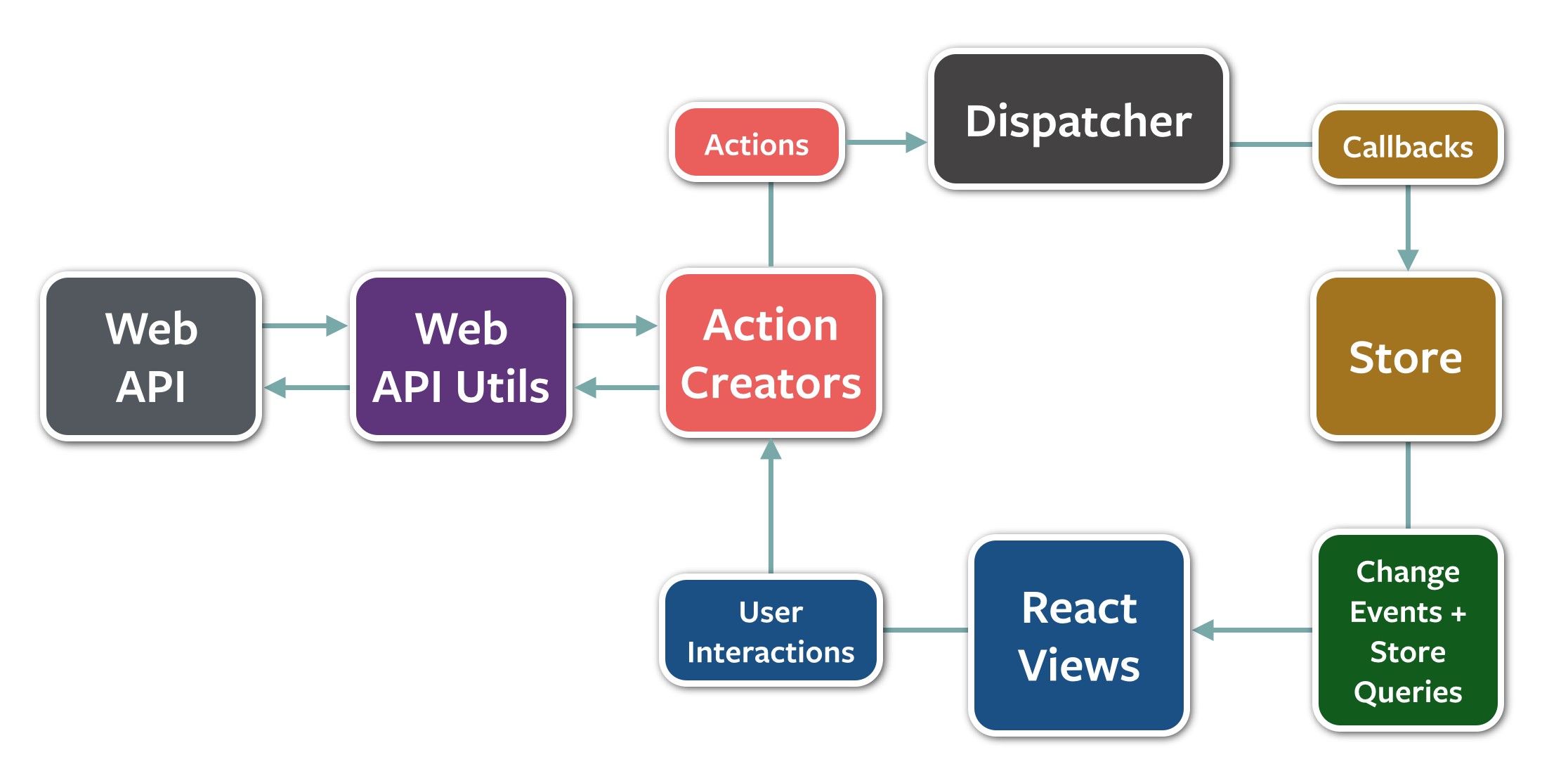⚠️ The Flux project has been archived and no further changes will be made. We recommend using more sophisticated alternatives like Redux, MobX, Recoil, Zustand, or Jotai.
Flux
An application architecture for React utilizing a unidirectional data flow.


Getting Started
Start by looking through the guides and examples on Github. For more resources and API docs check out facebook.github.io/flux.
How Flux works
For more information on how Flux works check out the Flux Concepts guide, or the In Depth Overview.
Requirements
Flux is more of a pattern than a framework, and does not have any hard dependencies. However, we often use EventEmitter as a basis for Stores and React for our Views. The one piece of Flux not readily available elsewhere is the Dispatcher. This module, along with some other utilities, is available here to complete your Flux toolbox.
Installing Flux
Flux is available as a npm module, so you can add it to your package.json file or run npm install flux. The dispatcher will be available as Flux.Dispatcher and can be required like this:
const Dispatcher = require('flux').Dispatcher;Take a look at the dispatcher API and some examples.
Flux Utils
We have also provided some basic utility classes to help get you started with Flux. These base classes are a solid foundation for a simple Flux application, but they are not a feature-complete framework that will handle all use cases. There are many other great Flux frameworks out there if these utilities do not fulfill your needs.
import {ReduceStore} from 'flux/utils';
class CounterStore extends ReduceStore<number> {
getInitialState(): number {
return 0;
}
reduce(state: number, action: Object): number {
switch (action.type) {
case 'increment':
return state + 1;
case 'square':
return state * state;
default:
return state;
}
}
}Check out the examples and documentation for more information.
Building Flux from a Cloned Repo
Clone the repo and navigate into the resulting flux directory. Then run npm install.
This will run Gulp-based build tasks automatically and produce the file Flux.js, which you can then require as a module.
You could then require the Dispatcher like so:
const Dispatcher = require('path/to/this/directory/Flux').Dispatcher;The build process also produces de-sugared versions of the Dispatcher and invariant modules in a lib directory, and you can require those modules directly, copying them into whatever directory is most convenient for you. The flux-todomvc and flux-chat example applications both do this.
License
Flux is BSD-licensed. We also provide an additional patent grant.


